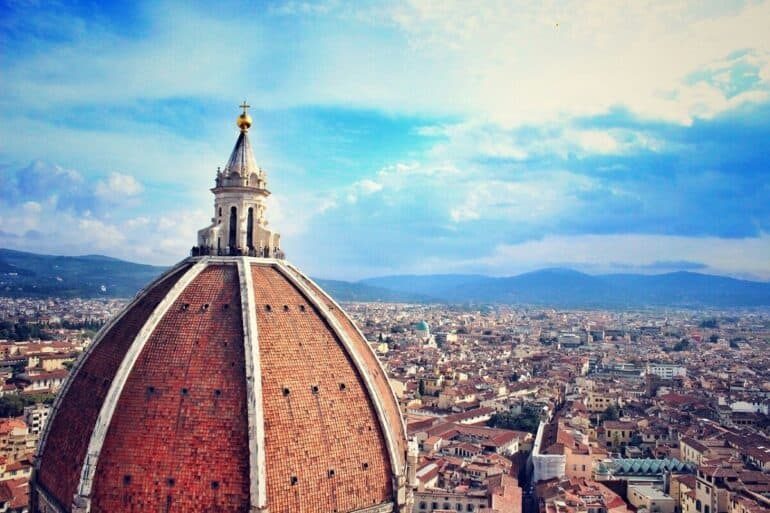Where to find Brunelleschi’s Masterpieces in Florence
The cobblestone streets of Florence are engulfed with rich history, ancient artwork, and monumental architecture. It is the birthplace of Renaissance art and Filippo Brunelleschi is the foundation of some of Florence’s most incredible sights. Here we’ll discover Brunelleschi’s unique perspective and how it has shaped architecture throughout Florence.
Brunelleschi’s Biography
Born in Florence in 1377, Filippo Brunelleschi was an Italian goldsmith, architect, and sculptor and one of the pioneers of early Renaissance Art. Brunelleschi’s upbringing is mostly a mystery, yet we do know he was born into a wealthy Florentine family and his education was focused on math and literature. In 1401, Brunelleschi competed against six other sculptors to create the bronze reliefs for the door of the Florence baptistery. To his disappointment, his entry of “The Sacrifice of Isaac,” was not chosen, which many believe was the reason he shifted his focus towards architecture. As his career progressed, he developed the system of linear perspective to create the illusion of three-dimensional space. This technique has become a staple in Italian architecture and throughout Western Europe. He is best known for the Cathedral of Santa Maria del Fiore (the Duomo) in Florence. Brunelleschi continued to work into his late years, until he died on April 15, 1446. He is now buried in the Duomo.
“He was given to us from heaven to give architecture a new form”
Le Vite, Giorgio Vasari
Brunelleschi’s Works in Florence
- The Dome of Santa Maria del Fiore Cathedral, Santa Maria Novella
- Old Sacristy of San Lorenzo, Piazza di San Lorenzo
- Pazzi Chapel, Piazza di Santa Croce
- Church of Santo Spirito, Piazza di Santo Spirito
- Ospedale degli Innocenti, Piazza Santissima Annunziata
- Rotonda del Brunelleschi, Piazza Filippo Brunelleschi
The Dome of Santa Maria del Fiore Cathedral
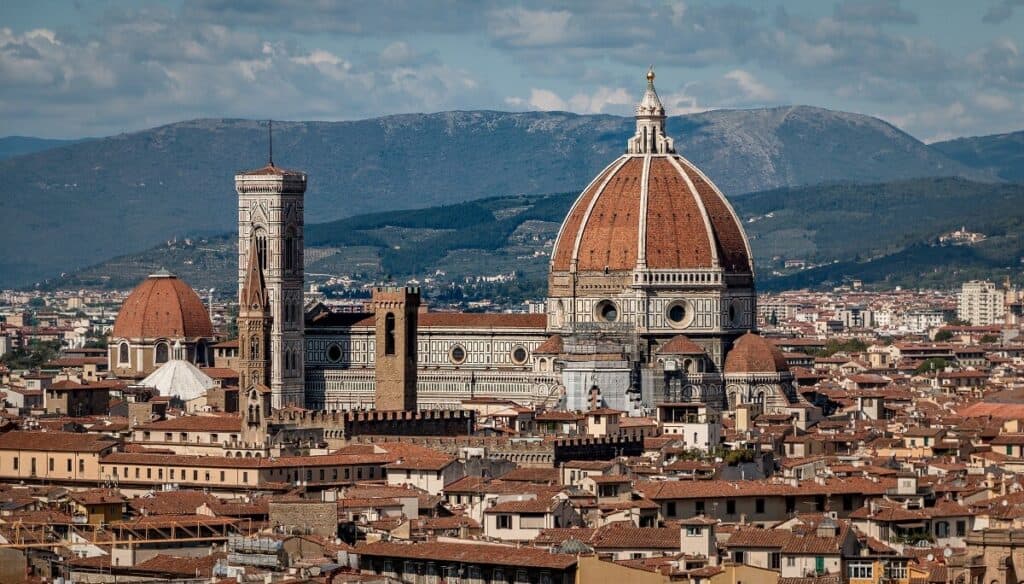
In 1296, when Florence was one of the most prosperous cities in Europe, its leaders decided to begin construction of a grand cathedral as a toast to the city’s success. However, it wasn’t until Brunelleschi became the chief architect in 1420, that they found a way to move forward in building this masterpiece. With 45.5 meters of diameter and over 116 meters in height, The Dome of the Cathedral of Santa Maria del Fiore (1419-1436) is the largest masonry vault in the world and this magnificent structure never seems to get old.
INSPIRATION
Guide To Florence’s Piazza Del Duomo
Old Sacristy of San Lorenzo

The Basilica di San Lorenzo dates to 393 as the first place of worship in Florence. Over a thousand years later, Giovanni di Bicci de’ Medici, commissioned Brunelleschi to expand the existing church and design the Old Sacristy (1428) to be used as a mausoleum for the Medici family. This space is the foundation of early Renaissance architecture and was Brunelleschi’s first completed interior. It maintains elements of a traditional basilica yet resembles Brunelleschi’s use of basic geometric shapes to create an elegant appearance.
Pazzi Chapel
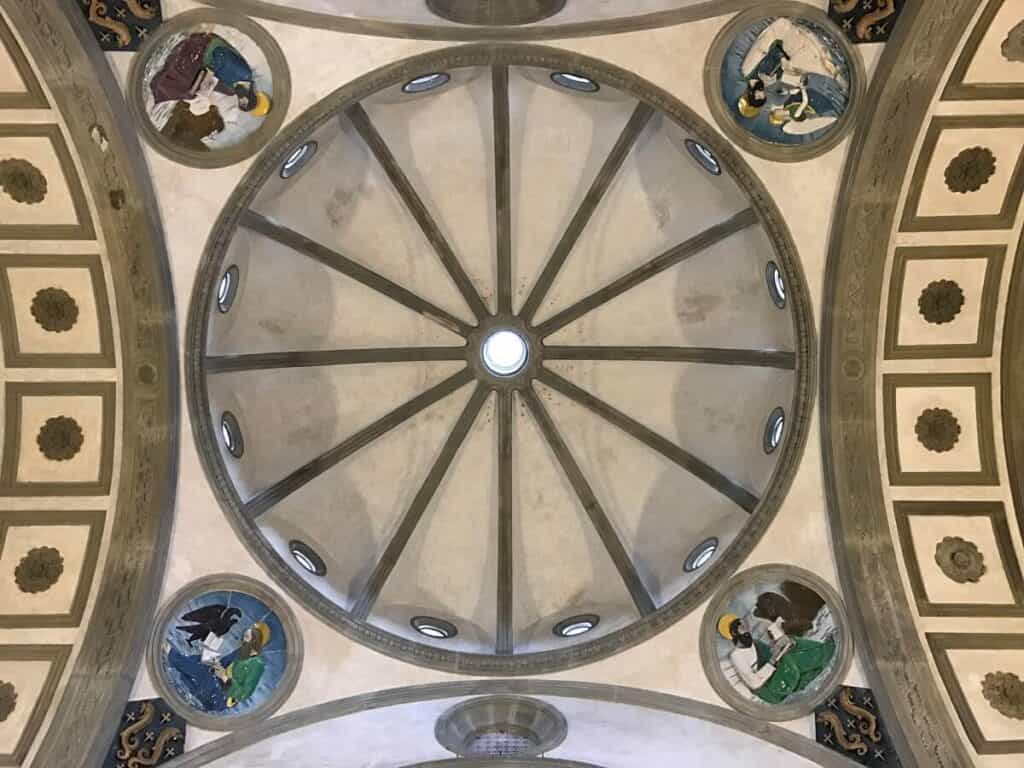
The Medici family wasn’t the only prominent family in Florence to notice the work of Brunelleschi. In 1429, The Pazzi family commissioned Brunelleschi to design a chapel adjacent to the Church of Santa Croce used for business and educational purposes for monks. Although this structure was not completed till almost 20 years after Brunelleschi’s death, its style comes as no surprise. A dome sits over a central square demonstrating Brunelleschi’s work with symmetry, proportions, and harmony.
Church of Santo Spirito
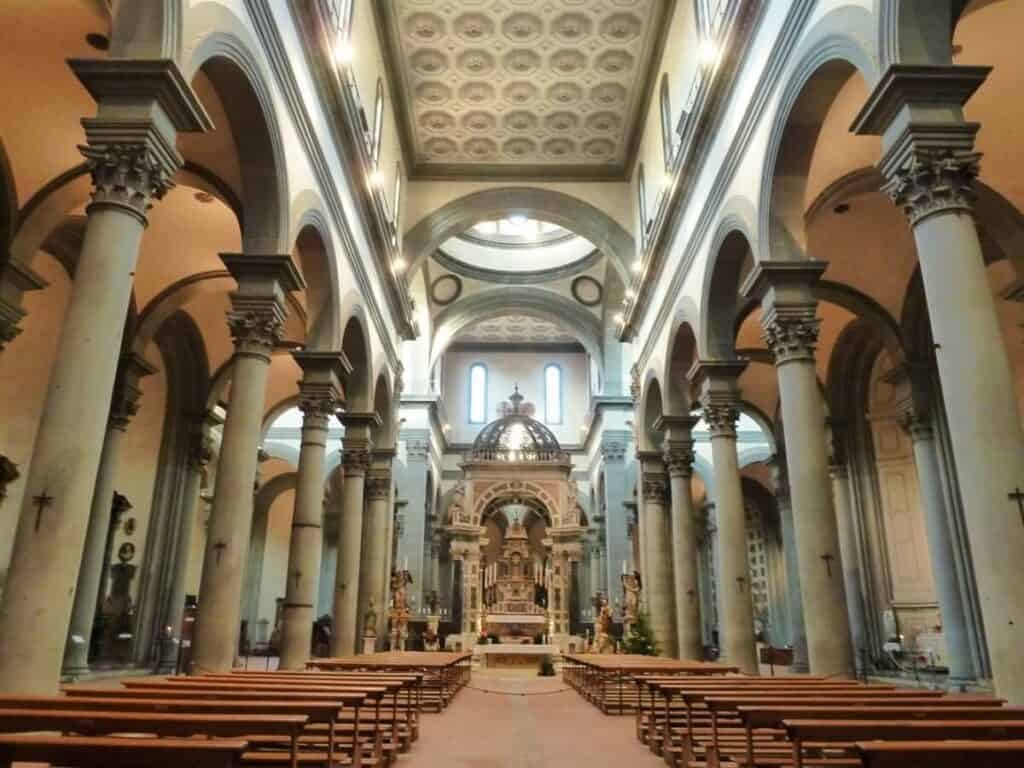
Located on the left bank of the Arno in the Piazza of Santo Spirito, is the Church of Santo Spirito (1434-82). With a similar appearance to the Basilica di San Lorenzo, the interior is divided into three aisles separated by columns with a high altar. Although construction began after the architect’s death, it still embodies Brunelleschi’s artistic vision of balanced and peaceful energy that encourages patrons to bask in its beauty.
Ospedale degli Innocenti
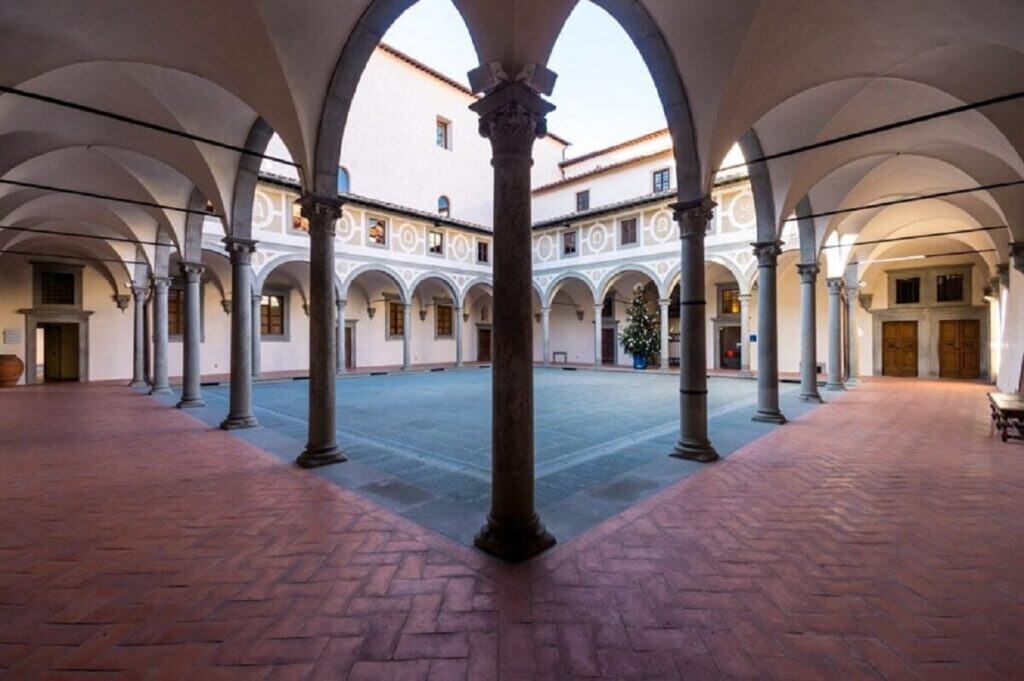
What is now known as the Museo Degli Innocenti located in the Piazza Santissima Annunziata, was once an orphanage called the Ospedale degli Innocenti (1419). The Florence Silk Guild funded the project, where Brunelleschi created a symmetrical structure divided into three segments: a convent, a church, and a living space for children. This is an example of Brunelleschi’s functional work with the main features including a square courtyard, a facade, and a loggia.
Rotonda del Brunelleschi
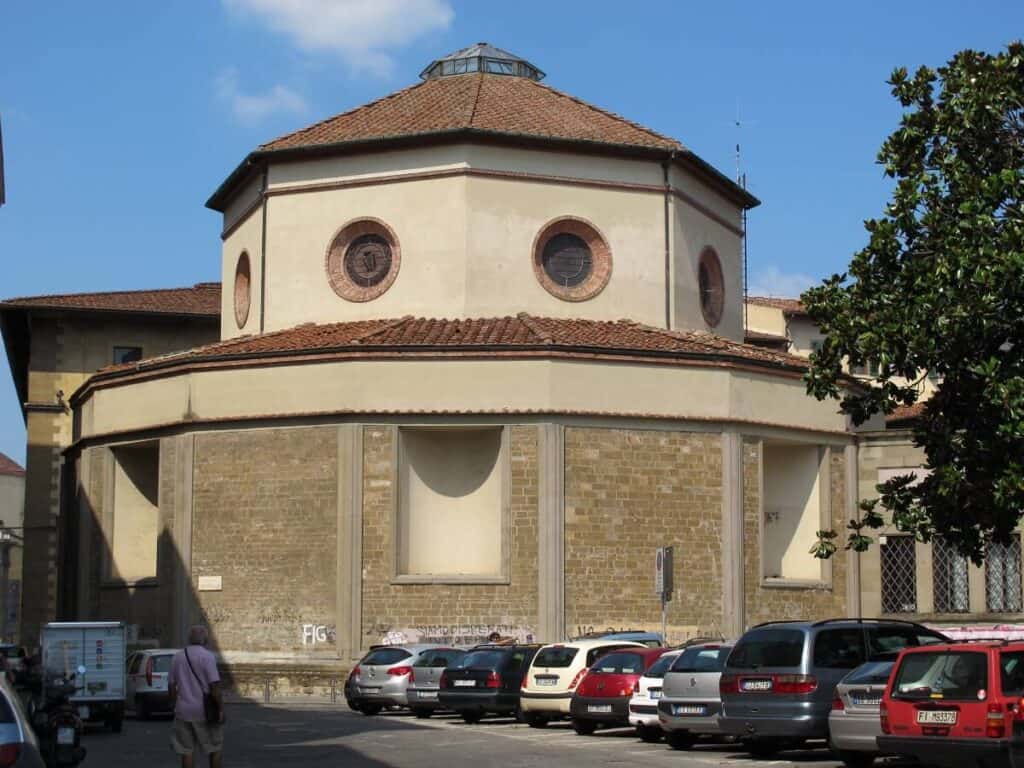
This unfinished chapel acts as a historical landmark which was once intended to be for the monastery of Santa Maria degli Angeli (1434-37). In 1437 due to loss of funds, construction was left unfinished until 1934 when a new structure was built. Despite its new structure, Brunelleschi’s centralized floor plan and octagonal dome is still prominent.
Brunelleschi’s Sculptures in Florence
The Sacrifice of Isaac
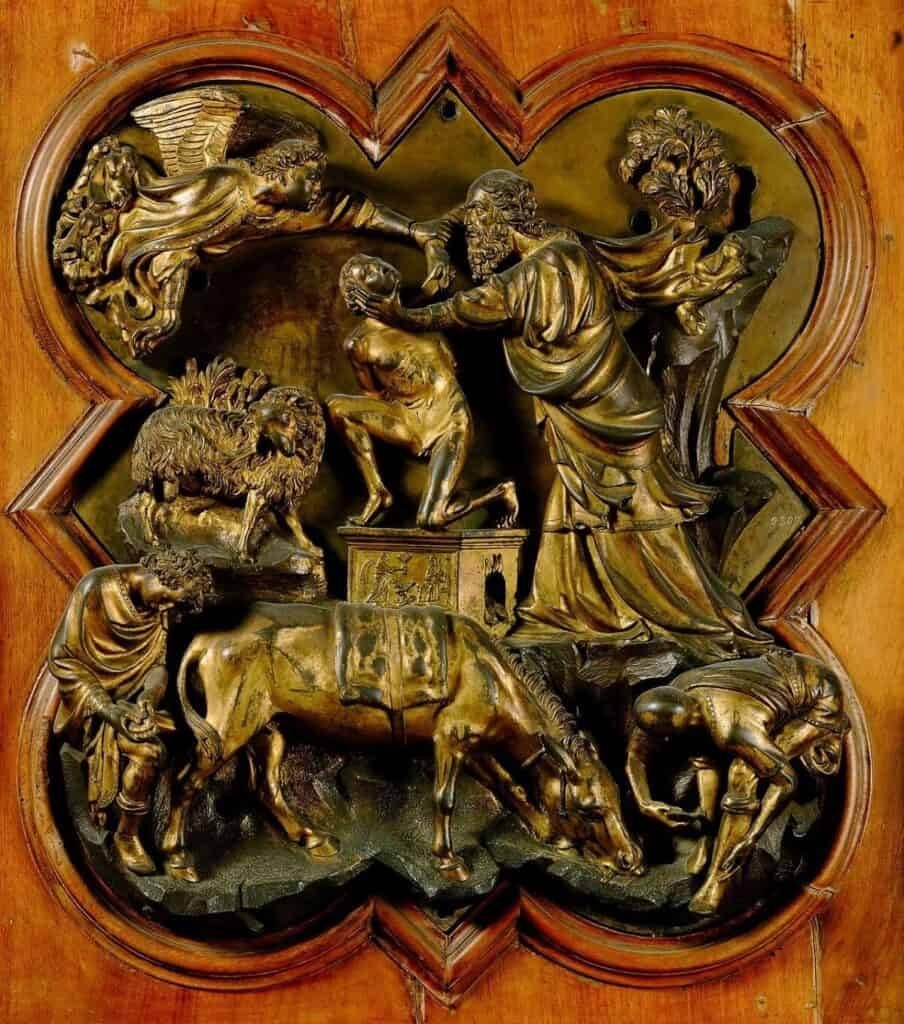
In 1401, a competition for the second set of bronze doors for the Florence Baptistery fuels one of the greatest artistic rivalries between Filippo Brunelleschi and Lorenzo Ghiberti. The artists were instructed to create an image representing the biblical tale of Abraham. The story goes, Abraham is ordered by God to kill his only son, Isaac, to test his faith. Abraham takes Isaac to the top of a mountain, pulls out a knife, and before he can hurt his son an angel appears. The angel stops Abraham, and a sheep is sent to be sacrificed instead. Brunelleschi’s deception is bold, detailed, and dramatic. His depiction of “The Sacrifice of Isaac” (1401-2) can be found in the Bargello National Museum.
CLICK HERE TO BUY BARGELLO MUSEUM TICKET
Brunelleschi’s Crucifix, Santa Maria Novella
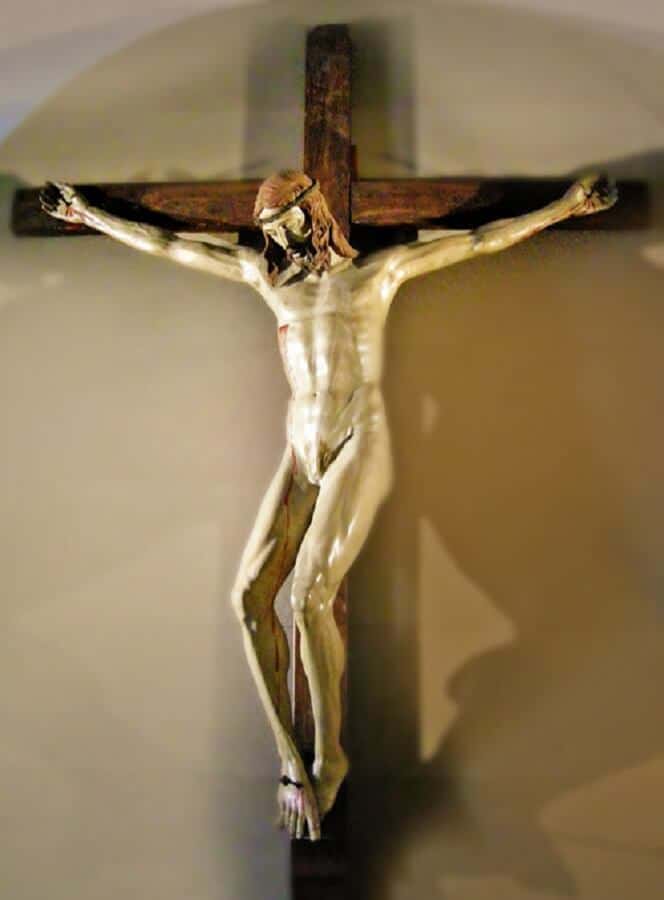
As we can tell Brunelleschi enjoyed pushing artistic boundaries and a little friendly competition. Giorgio Vasari claims Brunelleschi carved this wooden sculpture in response to Donatello’s version of the crucifix, found in the Santa Croce church. Brunelleschi described Donatello’s representation of Jesus Christ as peasant-like, compared to how he believed Jesus Christ should be perceived: Perfection. Brunelleschi’s Crucifix (1410-1415), which can be found in the Gondi Chapel of Santa Maria Novella, is designed to mathematical perfection to illustrate the essence of the divine.


